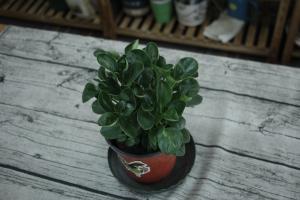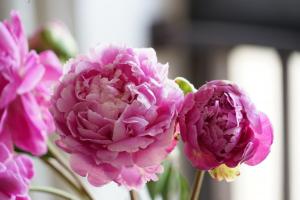Introduction
Pot plants, or potted plants, are commonly grown in containers and used as home decor or for gardening purposes. One of the most fascinating things about these plants is their ability to bloom or flower at the appropriate time. This raises the question: how do pot plants know when to flower? In this article, we will explore the various factors that influence the flowering of pot plants.
Light
Light is one of the most important factors that regulate the flowering of pot plants. Generally, most pot plants require a period of darkness to initiate flowering. This is because the darkness triggers the production of a hormone called "florigen" in the plant, which is responsible for the onset of flowering. However, the amount of light and the duration of the dark period required may vary depending on the plant species. For example, some pot plants require long nights of complete darkness, while others require shorter periods of darkness.
Temperature
Temperature is another critical factor that influences the flowering of pot plants. Most plants require a certain range of temperatures to initiate and sustain the flowering process. For example, some plants require cool temperatures in the fall to initiate flowering, while others require warm temperatures in the spring. Additionally, excessive heat or cold can adversely affect the flowering process and prevent the plant from blooming.
Watering and Fertilization
Watering and fertilization are essential for the growth and development of pot plants. However, excessive watering or over-fertilization can affect the flowering of the plant. Over-watering can cause root rot, which can prevent the plant from absorbing nutrients and water properly. Similarly, over-fertilization can cause the plant to grow excessively, which can delay or prevent flowering. Therefore, it is essential to provide the plant with the right amount of water and fertilizer to promote healthy growth and flowering.
Age of the Plant
The age of the pot plant is another important factor that affects the timing of flowering. Many plants require a certain maturity level before they can initiate flowering. This means that younger plants may not bloom until they have reached a certain age or growth stage. Additionally, some plants may require a certain size or height before they can initiate flowering.
Genetic Factors
The genes or genetic makeup of the pot plant also play a significant role in the timing of flowering. The genetic makeup determines the type of plant, its growth habits, and flower characteristics. For example, some plants may have a genetic predisposition to flower early or late, regardless of environmental factors. Additionally, the environment can influence the expression of genes, which can affect the flowering process.
Conclusion
In conclusion, pot plants have various mechanisms to sense and respond to environmental cues that signal the timing of flowering. Factors such as light, temperature, watering and fertilization, age, and genetics all play a crucial role in the flowering process. As a gardener, it is essential to understand these factors to provide the best conditions to promote healthy growth and flowering of pot plants.

 how many times do yo...
how many times do yo... how many planted tre...
how many planted tre... how many pine trees ...
how many pine trees ... how many pecan trees...
how many pecan trees... how many plants comp...
how many plants comp... how many plants can ...
how many plants can ... how many plants and ...
how many plants and ... how many pepper plan...
how many pepper plan...

































